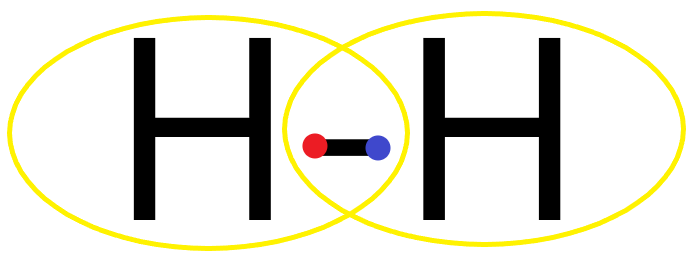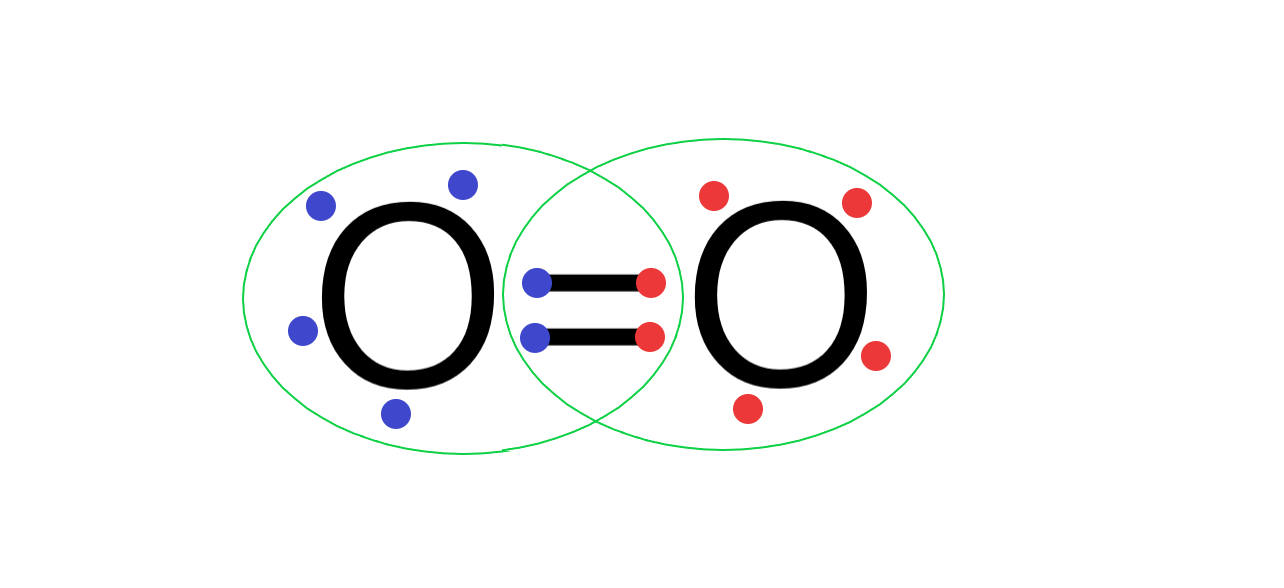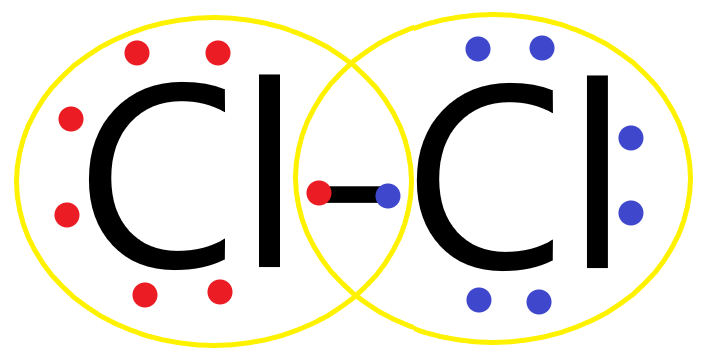
Answer
406.5k+ views
Hint: In a free state and at standard temperature and pressure, some elements exist as diatomic molecules to achieve stability. In these diatomic molecules, both the atoms are of the same element and hence are homonuclear.
Complete answer:
To determine whether the gas exists as a diatomic molecule, we need to check the stability of the diatomic molecule formed.
(A) Hydrogen atom has 1 electron in its valence shell and needs 1 more electron to form a complete outermost shell. So when two hydrogen atoms form a bond, both the hydrogen atoms share two electrons between them, forming a covalent single bond and completing the octet.
Its Lewis structure is as follows:

Hence ${{H}_{2}}$ is stable and exists as a diatomic gas.
(B) Oxygen atom has 6 electrons in its valence shell and needs 2 more electrons to form a complete outermost octet shell. So, when 2 oxygen atoms form a bond, both the oxygen atoms share 4 electrons between them, forming a covalent double bond and completing the octet.
Its Lewis structure is as follows:

Hence ${{O}_{2}}$ is stable and exists as a diatomic gas.
(C) Chlorine atom has 7 electrons in its valence shell and needs 1 more electron to form a complete outermost octet shell. So when 2 chlorine atoms form a bond, both the chlorine atoms share 2 electrons between them, forming a covalent single bond and completing the octet.
Its Lewis structure is as follows:

Hence $C{{l}_{2}}$ is stable and exists as a diatomic gas.
So, the correct answer is option (D) All of the above.
Note:
It should be noted that other than chlorine $C{{l}_{2}}$, oxygen ${{O}_{2}}$, and hydrogen ${{H}_{2}}$, the only other gases that exist as homonuclear diatomic molecules at STP are fluorine ${{F}_{2}}$ and nitrogen ${{N}_{2}}$.
At temperatures higher than STP, bromine $B{{r}_{2}}$ , and iodine ${{I}_{2}}$ also exist as diatomic molecules.
Complete answer:
To determine whether the gas exists as a diatomic molecule, we need to check the stability of the diatomic molecule formed.
(A) Hydrogen atom has 1 electron in its valence shell and needs 1 more electron to form a complete outermost shell. So when two hydrogen atoms form a bond, both the hydrogen atoms share two electrons between them, forming a covalent single bond and completing the octet.
Its Lewis structure is as follows:

Hence ${{H}_{2}}$ is stable and exists as a diatomic gas.
(B) Oxygen atom has 6 electrons in its valence shell and needs 2 more electrons to form a complete outermost octet shell. So, when 2 oxygen atoms form a bond, both the oxygen atoms share 4 electrons between them, forming a covalent double bond and completing the octet.
Its Lewis structure is as follows:

Hence ${{O}_{2}}$ is stable and exists as a diatomic gas.
(C) Chlorine atom has 7 electrons in its valence shell and needs 1 more electron to form a complete outermost octet shell. So when 2 chlorine atoms form a bond, both the chlorine atoms share 2 electrons between them, forming a covalent single bond and completing the octet.
Its Lewis structure is as follows:

Hence $C{{l}_{2}}$ is stable and exists as a diatomic gas.
So, the correct answer is option (D) All of the above.
Note:
It should be noted that other than chlorine $C{{l}_{2}}$, oxygen ${{O}_{2}}$, and hydrogen ${{H}_{2}}$, the only other gases that exist as homonuclear diatomic molecules at STP are fluorine ${{F}_{2}}$ and nitrogen ${{N}_{2}}$.
At temperatures higher than STP, bromine $B{{r}_{2}}$ , and iodine ${{I}_{2}}$ also exist as diatomic molecules.
Recently Updated Pages
10 Examples of Evaporation in Daily Life with Explanations

10 Examples of Diffusion in Everyday Life

1 g of dry green algae absorb 47 times 10 3 moles of class 11 chemistry CBSE

What happens when dilute hydrochloric acid is added class 10 chemistry JEE_Main

What is the meaning of celestial class 10 social science CBSE

What causes groundwater depletion How can it be re class 10 chemistry CBSE

Trending doubts
Fill the blanks with the suitable prepositions 1 The class 9 english CBSE

Which are the Top 10 Largest Countries of the World?

How do you graph the function fx 4x class 9 maths CBSE

Distinguish between the following Ferrous and nonferrous class 9 social science CBSE

The term ISWM refers to A Integrated Solid Waste Machine class 10 social science CBSE

The Equation xxx + 2 is Satisfied when x is Equal to Class 10 Maths

Difference between Prokaryotic cell and Eukaryotic class 11 biology CBSE

Which is the longest day and shortest night in the class 11 sst CBSE

In a democracy the final decisionmaking power rests class 11 social science CBSE




